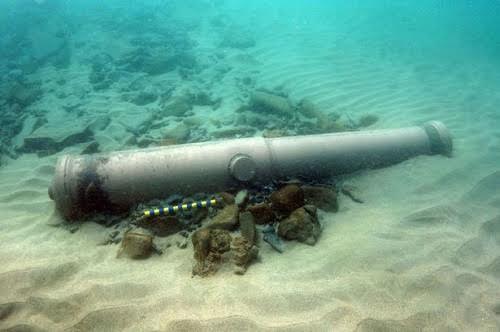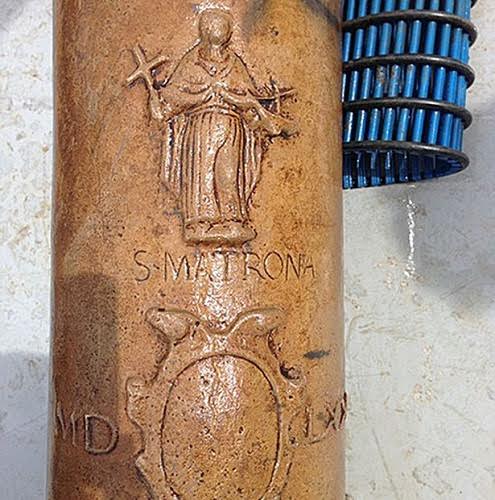Discovered more than 400 years old artillery out of Ireland
A series of 16th-century cannons were discovered on the seabed off northwestern Ireland when the wreck of the Spanish ship was exposed after major storms over the past two years.
Spread a cannon over 400 years old off Ireland
Irish Time reported on June 17 that wood from the ship merchant La Juliana sunk in 1588 was hit by shore by April. Following the trail, archaeologists discovered the wreck of the ship and many cannon and antiquities other value. According to them, despite being buried in the seabed for centuries, these cannons are still in excellent condition.

Discovered many cannons of the ship La Juliana wrecked in 1588. (Photo: Mirror)
One of the two cannons was ashore, with the figure of Saint Matrona , the saint of Catalonia and Barcelona, and dated 1570, the year of shipbuilding La Juliana.
Accordingly, the La Juliana specialized in transporting goods between Spain and Italy until it was requisitioned by King Philip II , to join the Spanish fleet to attack England and steal the throne of Queen Elizabeth First. .
This is one of the big boats, weighing 860 tons, can carry 32 cannons and 325 soldiers along with 70 sailors.
" We have discovered a wonderful and extremely important treasure, more than 425 years old ," Ireland's Minister of Arts, Heritage and Cultural Affairs Heather Humphreys said as she approached the area. "These artifacts clearly have historical and archeological significance."
It is expected that it will take weeks to recover all artillery, artifacts and artifacts still lying in the sand. Security forces have also been mobilized to protect the area from treasure hunters .

The image of St. Matrona is depicted on a cannon.(Photo: Mirror)
Spain failed to invade England after being defeated by the British navy in the Battle of Gravelines. The offshore area of Ireland was deadly against the Spanish fleet when one-third of the 63 ships were sunk here due to a terrible storm.
Two other ships of the Armada fleet were wrecked in severe storms in September 1588, La Lavia and Santa Maria de Vision , along with more than 1,000 soldiers and sailors. Historians believe that they are still buried and protected by sand on the ocean floor.
- Equipment to help American artillery target like sniper rifles
- Ireland: The golden falcon 'returns' after 100 years
- Discovered carvings on an ancient tomb in Ireland
- The United States built guns that fired bullets 7 times faster than sound
- The full moon actually appeared in Ireland
- The mystery of the gold rush 4,500 years ago in England
- Iron Age people were savagely tortured
- 'UFO' UFO in the sky of Ireland
- Australia discovered cannons dating from 250 years ago
- Video: American super-fast shells
- Facebook builds a huge data center in Ireland
- The summer heat wave reveals a 5,000-year-old circle in Ireland
 Discovered an ancient centipede fossil 99 million years old
Discovered an ancient centipede fossil 99 million years old Discovered bat-like dinosaurs in China
Discovered bat-like dinosaurs in China Discovered a 200-year-old bronze cannon of the coast
Discovered a 200-year-old bronze cannon of the coast Discover 305 million-year-old spider fossils
Discover 305 million-year-old spider fossils